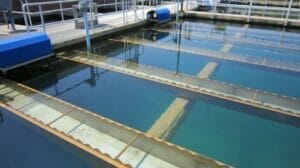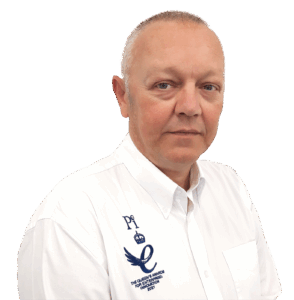Turbidity Meter – TurbSense®

Online Turbidity Meter – TurbSense®
Turbidity Meters from Pi are called TurbSense® and determine the true online turbidity and the suspended solids in water, using a nephelometric measurement of scattered light in accordance with ISO 7027. The TurbSense® sensor uses LED optical technology to provide an extremely stable, accurate, low maintenance sensor.
The TurbSense® turbidity meter is a breakthrough in measurement technologies in that it automatically varies the light output so that the turbidity can be measured independently of background light and electronic drift.
Ranging from 0.01 NTU to 1000 NTU with a resolution in the 0-10 NTU range of 0.001, the TurbSense® turbidity meter provides:
- Excellent resolution
- Single point calibration
- The simplicity of a probe
- Great value for money
- Long term reliability
- Autoclean so very low maintenance
Turbidity Meter 3D View
Each probe is equipped with a light source, a side detector for the measurement of scattered light from the sample and a reference detector for monitoring the light output. The light source is a long-life IR LED emitter. This configuration allows accurate and reliable measurements of online turbidity and suspended solids to be made. Reliable calibration can be carried out using a single calibration with no need for a ‘zero’.
The probes are constructed of stainless steel and sapphire so can withstand demanding operating environments. An Autoclean system can be included to keep the optical surfaces clean, thereby reducing maintenance to a potential ‘maintenance free’.
The TurbSense® online turbidity meter is suitable for dip monitoring and mounting in a debubbling flow cell.
The operating principle of the online turbidity meter is subject to a patent application and is unique in the way it handles the data it receives in order to calculate a zero, to calibrate and to derive the NTU (FNU) value from the readings.
- AutoClean solid state optical sensor – no moving parts
- Single point calibration – very easy to use
- Stable and reliable – excellent process control
- Suitable for all potable, waste and process waters between 0 NTU and 1000 NTU
- ‘Maintenance free’ – low cost of ownership
- No ‘zero’ required – improved accuracy at the low end
- No calibration required– no drift
- Up to 10 bar – for inline operation
- 0.001 resolution
- Automatic debubbling and bubble removal solutions – no interference from bubbles
The TurbSense® turbidity meter is available with different controllers giving you the same great performance with different communication, display, and control options. With the TurbSense® range of turbidity meters, you get everything that you need – and nothing that you don’t, with enhanced patented measurement technology.
The turbidity meter from Pi is now in use around the world providing trouble free, easy to use TurbSense® solutions to a range of online turbidity monitoring and control applications.
Anywhere where the measurement range is 0.01-1000 NTU (approx 0-2000 mg/l, application dependent) is a suitable application for the TurbSense® turbidity meter.
Traditional turbidity meter applications where the TurbSense® is particularly suited:
- Raw water inlet
- Settled water turbidity
- Final water turbidity
- Waste water effluent turbidity
- Fire hydrant monitoring
- Swimming pool clarity monitoring
 Small water treatment plants, secondary disinfection plants etc. tend to suffer from similar problems wherever they are in the world. The first is lack of communications SCADA infrastructure, the cost of which to install can be prohibitive. The second is the lack of a central DCS control infrastructure, again the installation of which can be cost prohibitive. The third is the remote location. Often these water treatment plants are in remote and difficult to access locations.
Small water treatment plants, secondary disinfection plants etc. tend to suffer from similar problems wherever they are in the world. The first is lack of communications SCADA infrastructure, the cost of which to install can be prohibitive. The second is the lack of a central DCS control infrastructure, again the installation of which can be cost prohibitive. The third is the remote location. Often these water treatment plants are in remote and difficult to access locations.
With these three issues facing many water engineers around the world, a low cost solution providing solutions to all three issues is available from Pi. A CRIUS®4.0 controller has the on board capacity to provide small scale SCADA, and full online PID control whilst the sensors (e.g. chlorine, pH, turbidity etc.) are suitable for long term operation without operator intervention.
To demonstrate the remote access capability of the CRIUS®4.0 please click here.
To learn more about the control capability of the CRIUS®4.0 please click here.
To hear more about other customers using the CRIUS®4.0 multi-parameter controllers in a similar way why not contact us?
Options for the TurbSense® include;
- Flow cell
- Debubbler + flow cell
- Pressure flow cell
- Dip mounting kit
- Solid secondary standard
The TurbSense® turbidity meter is designed to mount in a flow cell. The choice of flow cell will depend upon whether you have bubbles in your sample, what sort of bubbles, and whether or not you need to put the measured sample back into the process.
The TurbSense® turbidity meter can also be dip mounted in an open tank. Whilst this is possible, great care must be taken to avoid bubbles and stray light. In very clean water, it will be necessary to use a sun light shield.
In addition the TurbSense® can be supplied with a solid secondary standard, for calibrating or checking the calibration of your turbidity meter.
The online TurbSense® turbidity meter can be calibrated by comparison with another measurement device (for example, a hand held turbidity meter), by placing it in a sample with known turbidity (for example, a Formazin solution or a suspension of latex spheres), or by the use of a solid secondary calibration block (please see Technical Note ‘TurbSense® Secondary Standards’ under downloads).
Calibration of TurbSense® is generally quicker and easier than with other turbidity meters as there is no need to “zero” the sensor as through a clever use of the laws of physics (patented), there is no need for a zero.
The first is to use another device, such as a handheld portable turbidity meter to determine the turbidity of the sample that the TurbSense® is monitoring.
The second is to put the TurbSense® into a sample with a known turbidity.
The third is to use a solid secondary calibration standard available from Pi, which fits over the end of the sensor.
Normally you would need to also put the other online turbidity sensor into a ‘zero’ to give the sensor two points to draw a calibration but the TurbSense® uses some fundamental laws of optics to make that zero unnecessary (patented).
Sapphire is used for the windows as it is tough and scratch resistant (much more than glass or quartz). Its use also allows the windows to be thin (because it’s stronger) and therefore have good optical transmission.
The maximum temperature of the sample being monitored is 50°C. We choose 50°C because it is well within the upper limits of the electronic components that we use and still gives a good range or temperature for measuring online turbidity.
You can if the turbidity is high enough or the pipe is big enough.
To achieve a high level of performance the TurbSense® uses a powerful light source and sensitive optics. This means that in a pipe, reflections from walls and bends can cause inaccurate readings. The higher the turbidity, the closer the reflective surfaces can be so that at >200NTU putting the TurbSense® online turbidity meter in a pipe should be no problem.
For optimum performance fit an AutoClean unit to the sensor. This can be used to periodically clean the sensor window to ensure the highest accuracy in readings. Try to avoid placing the sensor in direct sunlight as the sensitive optics can pick up infra-red light emitted by the sun.
The flow chamber removes entrained bubbles to prevent them causing an interference to measurements. Its black polypropylene construction eliminates stray light and the lid removes ambient light, both potential sources of interference in measurements.
Turbidity is a measure of the cloudiness of water. How we measure turbidity is defined in international standard ISO 7027 and several US EPA standards. It is a measure of the amount of light that is scattered at 90 degrees. The more light that is scattered the higher the turbidity.
There are several units that are used for turbidity measurement and all of them are determined by the amount of light that is scattered through 90 degrees by a defined solution of formazin in water. The most common unit is NTU (Nephelometric Turbidity Unit) but there are also other units such as FTU (Formazin Turbidity Unit) and FNU (Formazin Nephelometric Unit). Typically NTU is used when the method is in compliance with a US EPA method such as 180.1 and FNU is used when the method of measurement is in compliance with the ISO standard 7027, but these are not fixed rules and the three units can be used interchangeably.
There is a hard upper limit for the measurement of turbidity which is 4000 NTU. This is the top of the definition of turbidity. Typically turbidities that people measure are much lower, for example drinking water will be less than one NTU and ofter less than 0.1 NTU. River water is typicall below 10 NTU when it is “clear” but can go up to 1000 NTU when it looks “muddy”.
1 NTU (Nephelometric Turbidity Unit) is a measure of the cloudiness of water that equates to a particular amount of Formazin dissolved in water. 1 NTU water looks clear to the human eye and might be found in a swimming pool or in drinking water.
When a turbidimeter (whatever the geometry between the source and the detector) is calibrated against Formazin it has the units FTU (Formazin Turbidity Unit). If the device complies with the US EPA mandated geometry and light source then the unit becomes NTU (Nephlometetric Turbidity Unit). If the device complies with the International standard ISO 7027 then the unit is FNU (Formazin Nepholmeteric Unit), although it is more commonly referred to as NTU. The relationship between FTU:NTU:FNU is 1:1:1.
Every TurbSense® is factory calibrated and is supplied with a calibration sheet (Certificate of Calibration).
The TurbSense® turbidimeter uses Modbus to communicate with the control electronics, that means that the sensor cable can be extended or shortened, but it cannot be replaced. This is because it is potted into the sensor to prevent water leaks.
Focus Ons are a series of short articles distributed by email providing technical information regarding instrumentation, process measurement in potable, waste, process and pool waters. If you would like to join the mailing list, please contact us.
>> TurbSense® for Online Turbidity Monitoring
| Document | Type | Size |
|---|---|---|
| TurbSense® | Brochure | 631kB |
| TurbSense® Calibration | Article | 942kB |
| TurbSense® Secondary Standards | Technical Note | 676kB |
| TurbSense® Mounting Options | Technical Note | 1,010kB |
| US Turbidity Trial | Article | 924kB |
| Bubbles in Turbidity | Technical Note | 584kB |
| Overcoming ‘Noise’ and Establishing a ‘Zero’ | Technical Note | 677kB |
| Secondary Standards Instructions | Technical Note | 563kB |
| Probe Fouling | Technical Note | 459kB |
"We at Scottish Water have been using the excellent Pi LabSense 3 and portable UV254 instruments in the field for optimizing our Water Treatment processes for some years now. We find them easy to use and invaluable for detecting and resolving issues in a timely, efficient and effective manner. Two great pieces of kit!”
Paul Weir
Scottish Water - UK
"I want to thank you and all at Process Instruments for all the assistance, information and handholding during the year. The help that was so freely given was very much appreciated. Can you please extend my appreciation to all at Pi and let me wish you all a happy, safe and wonderful Christmas and I look forward to working with you again in 2021."
Michael Bailey
Wexford Co. Co. - Ireland
"Excellent level of support and always so much more prompt than a lot of our suppliers."
Phill Tuxford
Detectronic - UK
"The plant can’t produce good quality water without the CoagSense."
Mick Murphy
Wexford Co. Co. - Ireland
"We've used the CRIUS® with chlorine, pH and conductivity sensors for several years and confirm quality, performance and reliability has been wholly satisfactory to date."
David Kerr
Karis Technical Services Ltd. - UK
"We in ECM ECO Monitoring can only recommend Process Instruments products and services to all other potential clients. They have very complex portfolio of products for water quality monitoring in various types of industries, friendly attitude, very quick delivery time and prompt reaction to all our needs and inquires. Our clients especially appreciate the particle counters and sizers allowing identification of drinking water treatment problems. The Streaming Current Monitors are a great tool for optimisation of expensive chemicals.”
Branislav
ECM ECO Monitoring - Slovakia
"Simply the best turbidity available."
John Clark
Chemtrac - Atlanta, GA
"In 2019, we purchased 29 particle counters which were installed in our water plants. So far, their performance has been perfect."
Li Yongjun
Jinan Hongquan Water Company - China
"We have installed hundreds of ozone analyzers from Pi over the years. They are just accurate, reliable and require low maintenance."
Jiao Tumei
Qingdao Guolin Environmental Technology Co., Ltd., - China
"Over the last few years we've purchased chlorine and turbidity analyzers from Chemtrac and with routine calibration the probes measure the chlorine and turbidity without any issue. We are very happy with this product and would highly recommend them."
Daniel "Buck" Owen
Ocoee Utility District - Ocoee TN
"We've been using these analyzers since 2008. They're easy to use and very stable. Calibration and maintenance is quick and simple."
Lloyd Gruginski
Chehalis WTP - Chehalis, WA
"The Pi products provide excellent value for money and represent the best municipal drinking water analyzers available."
John Clark
Chemtrac - Atlanta
“Servicing customers is much more than just solving problems or addressing complaints and Pi does that very competently with technical and quick efforts providing a good experience."
Clovis Tuchapski
Buckman - Latin America
"Pi's technical team has enabled us to be one step ahead of our competitors by adding value to our projects thanks to their fast and excellent support from the moment you first reach out.
Ibrahim Kaplin
Thermomed - Turkey
"Going from ORP control to amperometric chlorine sensor control has undoubtedly improved the pool water immensely!"
Chris Tedeschi
Link Automation - USA
"The Streaming Current Monitor from Pi is the best SCM I have ever used. The analyser responds quickly and has many powerful functions, which helps me save a lot of money."
Ye Yancong
Xiamen Xishan Water Plant - China
“Process Instruments has a broad range of high quality and user-friendly solutions for water-industry problems. The short lead times and great customer support make Pi a reliable partner.”
Péter Szabó
SC KATALIN NOHSE CHIMIST IMPORT SRL - Romania
"Process Instruments UK always have a high level of customer service. All our interactions with Pi have exceeded our expectations. It is always a pleasure working with you.”
Iñaki Seisdedos Rodríguez
Izasa Scientific - Spain
"The support from Pi and its partners is superb. They go above and beyond to ensure that, not only is their equipment perfect but that the process is working great too. Five Stars!"
Anthony Glitto
Equip Solutions - Illinois, USA
"Process Instruments UK always have a high level of customer service. All our interactions with Pi have exceeded our expectations. It is always a pleasure working with you.”
Rudi Tuffek
Allpronix - South Africa












